Top Modern Laboratory Equipment Essential for Labs
In the context of advancing technology, owning modern laboratory equipment is essential to ensure accuracy and efficiency in research. Modern lab equipment not only enhances the quality of research results but also saves time and effort for scientists. Below is a list of essential modern laboratory equipment to give you an overview and help you make suitable choices.
Top Modern Laboratory Equipment
Specialized Weighing Scales in Laboratories
Scales are crucial in laboratories, used to measure the mass of materials, chemicals, solutions, etc. There are various types of specialized scales used in laboratories, each with its own features and functions to meet specific research needs. Here are some common types of specialized scales in laboratories:
-
Analytical Balance:
- High Accuracy: Analytical balances have the highest accuracy among laboratory scales, with a minimum error that can reach 0.00001g.
- Small Load Capacity: Analytical balances usually have a small load capacity, ranging from 0.1g to 50g, suitable for weighing small and light samples.
- Special Design: Analytical balances are specially designed to minimize the influence of environmental factors such as temperature, vibration, humidity, etc., ensuring high accuracy in results.
- Applications: Analytical balances are widely used in scientific fields requiring high precision such as chemistry, biology, physics, medicine, etc.
.png)
-
Semi-Micro Balance:
- High Accuracy: Semi-micro balances have high accuracy, with a minimum error that can reach 0.0001g.
- Medium Load Capacity: Semi-micro balances usually have a medium load capacity, ranging from 1g to 200g, suitable for weighing small to medium-sized samples.
- Design: Semi-micro balances are designed similarly to analytical balances but with larger sizes and load capacities.
- Applications: Semi-micro balances are used in scientific research requiring high precision but not as stringent as chemical analysis, quality control testing, etc.
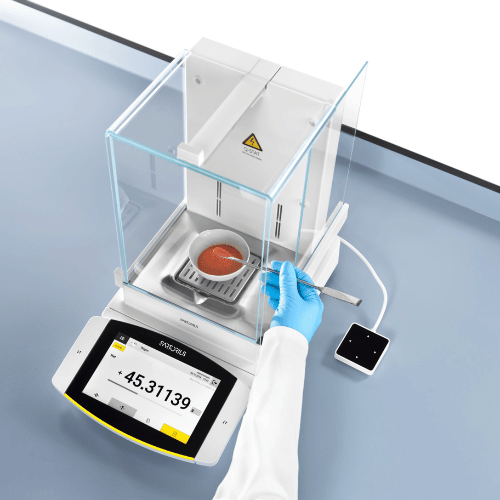
-
Micro Balance:
- Accuracy: Micro balances have high accuracy, with a minimum error that can reach 0.001g.
- Small Load Capacity: Micro balances usually have a small load capacity, ranging from 0.01g to 5g, suitable for weighing very small and light samples.
- Design: Micro balances are designed similarly to semi-micro balances but with smaller sizes and load capacities.
- Applications: Micro balances are used in scientific fields requiring high precision when measuring very small samples such as biological analysis, material research, etc.
.png)
-
Ultra-Micro Balance:
- Highest Accuracy: Ultra-micro balances have the highest accuracy among laboratory scales, with a minimum error that can reach 0.000001g.
- Extremely Small Load Capacity: Ultra-micro balances usually have an extremely small load capacity, ranging from 0.001mg to 1mg, suitable for weighing extremely small and light samples.
- Design: Ultra-micro balances are specially designed to completely eliminate the influence of environmental factors, ensuring the highest accuracy in results.
- Applications: Ultra-micro balances are used in scientific fields requiring the highest accuracy such as nanoscience, particle physics, etc.
.png)
Laboratory Cabinets
Laboratories require various types of cabinets for storing chemicals, tools, equipment, and samples. Each type of cabinet has specific features and functions to meet the needs of different research fields. Here are some common types of laboratory cabinets:
-
Chemical Storage Cabinet:
- Purpose: Used to store hazardous, flammable, or odorous chemicals.
- Construction: Made of stainless steel or high-grade plastic, resistant to fire, corrosion, and chemicals.
- Ventilation System: Equipped with a ventilation system to remove harmful gases and odors from the environment.
- Safety: The cabinet door must be locked securely to prevent unauthorized access.
- Applications: Storing various chemicals including flammable chemicals, acids, and reactive compounds.
-
Fume Hood:
- Purpose: Used to protect users from harmful gases, chemical vapors, and dust during experiments.
- Features: Equipped with a powerful exhaust system to remove hazardous substances from the workspace.
- Applications: Used in chemical, biological, and medical laboratories.
- Safety: Follow safety regulations when using a fume hood to ensure safety for oneself and others.
-
Drying Cabinet:
- Purpose: Used to dry laboratory tools, chemicals, and samples.
- Features: Includes temperature and humidity control systems to dry materials efficiently and safely.
- Applications: Used in various scientific fields such as chemistry, biology, medicine, pharmaceuticals, etc.
- Safety: Ensure the drying temperature is suitable for each type of material to avoid damage.
-
Refrigerator:
- Purpose: Used to store chemicals, solutions, samples, and reagents at low temperatures.
- Features: Available in various sizes and temperature ranges to meet specific research needs.
- Maintenance: Must be cleaned regularly to prevent bacteria and mold growth.
- Safety: Follow safety guidelines when using refrigerators to ensure safety for oneself and others.
.png)
-
Incubator:
- Purpose: Used to culture and grow microorganisms in a sterile environment.
- Features: Equipped with a heating system and UV light for sterilization.
- Applications: Used in biological, microbiological, and medical laboratories.
- Safety: Follow biosafety regulations to avoid contamination.
-
Autoclave:
- Function: Uses high temperature and pressure to sterilize tools, equipment, and waste, completely eliminating bacteria, viruses, and other microorganisms.
- Applications: Widely used in medical, microbiological, pharmaceutical laboratories, and other research fields to ensure sterile equipment and working environment.

Additionally, there are other specialized cabinets used in laboratories, such as microscope cabinets, gas storage cabinets, deep freezers, etc. The choice of cabinet depends on the specific research needs and the characteristics of the materials to be stored or preserved.
Optical Devices in Laboratories
Optical devices use optical principles to observe, measure, and manipulate light. Optical devices play a crucial role in many scientific research fields and practical applications. Here are some common types of optical devices in laboratories:
-
Microscope:
- Purpose: Used to magnify images of objects too small to be seen by the naked eye.
- Varieties: Comes in various types with different magnification and resolution levels to suit research needs.
- Applications: Used in fields such as biology, medicine, material science, forensic science, etc.
-
Magnifying Glass:
- Purpose: Used to magnify images of small objects for the naked eye.
- Varieties: Comes in different types with various magnification levels to suit individual needs.
- Applications: Used in fields like watch repair, jewelry, product label inspection, reading, etc.
.png)
Chemical Storage Containers in Laboratories
Chemical storage containers are essential in any laboratory. They are used to store various chemicals, including liquids, solids, and gases. Containers must be made from appropriate materials to withstand the chemicals they will hold and must be properly maintained to prevent leaks and spills.
Here are some common types of chemical storage containers:
-
Glass Bottles: The most common chemical containers due to their transparency, inertness, and ease of cleaning. They come in various sizes and shapes and can store different types of chemicals.
-
Plastic Bottles: Lighter and less brittle than glass bottles but more susceptible to chemical attacks. Usually used for storing non-hazardous chemicals or those incompatible with glass.
-
Test Tubes: Small glass tubes used for storing small amounts of chemicals. Often used for experiments or solution preparation.
-
Erlenmeyer Flasks: Glass flasks with a flat bottom used to store solutions. Commonly used for heating solutions or performing chemical reactions.
.png)
-
Burets: Glass tubes with a spout used to dispense precise amounts of liquid. Often used in titrations and quantitative analysis.
.png)
-
Pipettes: Glass or plastic tubes used to transfer small amounts of liquid. They come in various sizes and can dispense liquids from a few microliters to several milliliters.
When choosing chemical storage containers, it's important to consider the type of chemicals being stored, the size of the solution, and the method of use. It's also crucial to adhere to all safety procedures when using and maintaining chemical storage containers.
Chemical Mixing and Processing Equipment
Chemical mixing and processing equipment are important tools used across various industries to mix, stir, emulsify, separate, extract, and process chemicals. They come in different types, each with its own functions and applications.
-
Laboratory Stirrer:
- Purpose: Used to mix chemical solutions thoroughly.
- Types: Includes paddle stirrers, turbine stirrers, and magnetic stirrers.
- Applications: Used in chemical synthesis, pharmaceutical production, and food processing.
- Safety: Ensure proper operation and maintenance to avoid accidents or damage to the equipment.
-
Mixing Equipment:
- Purpose: Used to mix various types of chemicals and materials.
- Types: Includes high-shear mixers, planetary mixers, and homogenizers.
- Applications: Used in industries such as cosmetics, pharmaceuticals, and food processing.
- Safety: Follow safety guidelines to avoid accidents or damage to the equipment.
Duc Duong Mixing Equipment
-
Homogenizer:
- Purpose: Used to homogenize liquids, creating a uniform mixture.
- Types: Includes high-pressure homogenizers and ultrasonic homogenizers.
- Applications: Used in fields like pharmaceuticals, food processing, and chemical research.
- Safety: Ensure proper operation and maintenance to avoid accidents or damage to the equipment.
Duc Duong Homogenizer
-
Extractor:
- Purpose: Used to separate substances from mixtures.
- Types: Includes Soxhlet extractors and rotary evaporators.
- Applications: Used in fields like chemical analysis, pharmaceuticals, and environmental research.
- Safety: Follow safety guidelines and maintenance procedures to avoid accidents or damage to the equipment.
Duc Duong Extractor
Heat Treatment Equipment
Heat treatment equipment is used to process materials at high temperatures to change their physical or chemical properties. This equipment is essential in many industries, including metallurgy, material science, and chemistry.
-
Furnace:
- Purpose: Used for heating materials to high temperatures for various processes.
- Types: Includes muffle furnaces, box furnaces, and laboratory furnaces.
- Applications: Used in metallurgy, material science, and ceramics.
- Safety: Follow safety guidelines to avoid accidents or damage to the equipment.
.png)
-
Oven:
- Purpose: Used to heat materials for drying, curing, or baking.
- Types: Includes laboratory ovens, drying ovens, and industrial ovens.
- Applications: Used in industries such as pharmaceuticals, food processing, and material science.
- Safety: Follow safety guidelines to avoid accidents or damage to the equipment.
Duc Duong Oven
-
Hot Plate:
- Purpose: Used to heat liquids and materials in laboratory experiments.
- Types: Includes magnetic hot plates and standard hot plates.
- Applications: Used in chemical synthesis, biology experiments, and material testing.
- Safety: Ensure proper operation and maintenance to avoid accidents or damage to the equipment.
Duc Duong Hot Plate
-
Incubator:
- Purpose: Used to maintain a controlled temperature environment for growing microorganisms or cultivating cells.
- Types: Includes CO2 incubators and shaking incubators.
- Applications: Used in biological research, medical diagnostics, and pharmaceutical development.
- Safety: Follow safety guidelines to avoid contamination and ensure accurate results.
Duc Duong Incubator
Other Laboratory Equipment
Laboratories often use additional equipment to support their research and testing activities. Here are some common types of laboratory equipment:
-
Thermometer:
Duc Duong Thermometer
- Purpose: Used to measure temperature in various experiments.
- Types: Includes digital thermometers, mercury thermometers, and infrared thermometers.
- Applications: Used in chemistry, biology, and environmental research.
- Safety: Ensure proper calibration and maintenance to obtain accurate readings.
-
pH Meter:
Duc Duong pH Meter
- Purpose: Used to measure the acidity or alkalinity of solutions.
- Types: Includes handheld pH meters and benchtop pH meters.
- Applications: Used in chemical analysis, environmental monitoring, and food testing.
- Safety: Ensure proper calibration and maintenance for accurate measurements.
-
Centrifuge:
Duc Duong Centrifuge
- Purpose: Used to separate components of a mixture based on their density by spinning them at high speeds.
- Types: Includes tabletop centrifuges and high-speed centrifuges.
- Applications: Used in biology, chemistry, and medical laboratories.
- Safety: Follow safety guidelines to prevent accidents and ensure proper operation.
-
Spectrophotometer:
Duc Duong Spectrophotometer
- Purpose: Used to measure the absorbance or transmission of light through a sample.
- Types: Includes UV-Vis spectrophotometers and fluorescence spectrophotometers.
- Applications: Used in chemical analysis, biology, and environmental research.
- Safety: Follow proper operating procedures to ensure accurate measurements.
CÔNG TY KHOA HỌC KỸ THUẬT ĐỨC DƯƠNG
Địa chỉ: 1014/67 Tân Kỳ Tân Quý, Bình Hưng Hòa, Bình Tân, HCM
Tel: (028) 3762 8042 - 3762 8043 - 3750 8514 - 3750 8793
Fax: 028 37628043
Email: ducduong@ducduongco.com
Website: www.ducduongco.com
Comments
Relative post
- Korea's Largest Autoclave Manufacturer Shinjineng Participates in Korea Lab 2017 Exhibition
- How long do items stay sterile after autoclaving?
- AUTOCLAVE STERILIZER - SHINJINENG
- What is Acetylene (C2H2)? Essential Uses and Safety Guideline
- Vietnamese doctor turns passion for wounds into $700 million company in Singapore
- Autoclave Sterilization Process
- What is a Sample Digester? The Ultimate Solution for Chemical Analysis




.png)
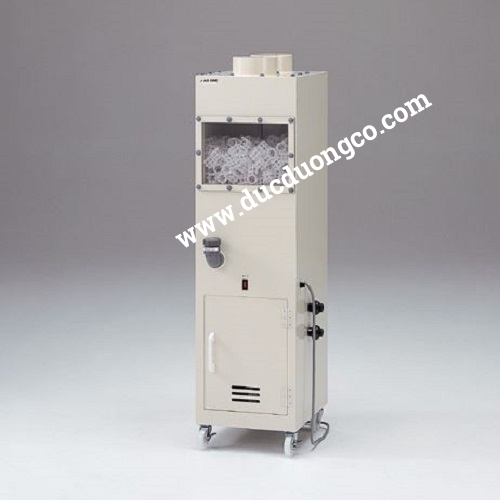

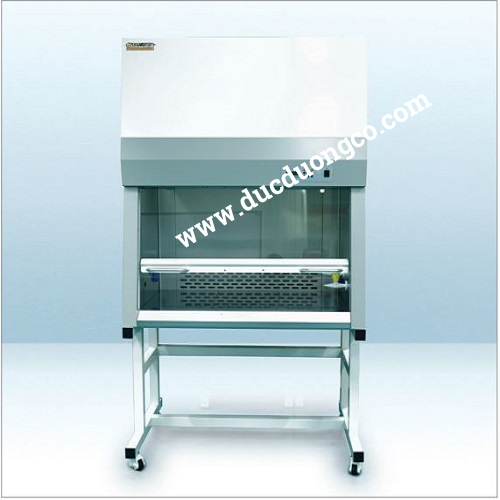
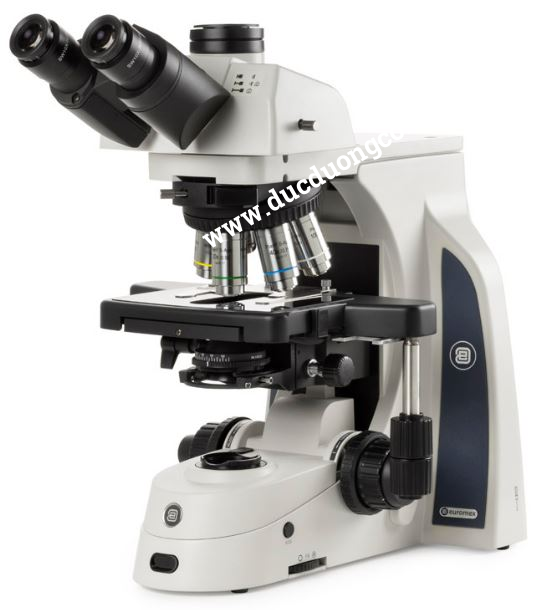
.png)
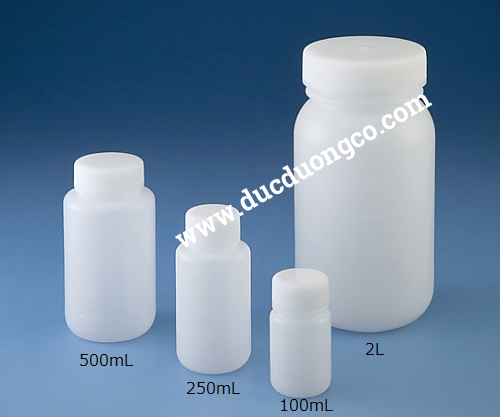

.png)

